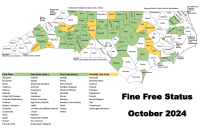New LTLT an important voice for the region
Western North Carolina residents will be well served by the merger of the Land Trust for the Little Tennessee and the Little Tennessee Watershed Association.
The merger undoubtedly makes sense from an administrative and fund-raising perspective, something employees and board members emphasized in an article in last week’s edition of The Smoky Mountain News. It will give the LTLT (the new organization will retain that name) added resources as it expands its scope in the six westernmost counties, particularly in the Tuckasegee and Hiawassee watersheds.
Perhaps more importantly, however, the merger is a manifestation of the progressive approach to conservation that leaders of these two organizations have helped promote during the last several decades.
“We already had plans to broaden our scope and the areas we touch,” said Ken Murphy, board chairman of the LTLT. “Land and water are almost inseparable.”
That concept — that protecting land in turns help protect the water resources — sounds like common sense. Making it happen in the real world, however, isn’t so easy. LTLT and LTWA volunteers and employees have put together an admirable record of achievement over the years. By researching and providing data on the unique characteristics of the Little Tennessee watershed, these organizations convinced government officials, granting agencies and private entities that protecting the Little Tennessee River watershed was worthwhile.
When I first started covering this region as a reporter and editor, two people who have played a critical role in the LTLT and LTWA became trusted sources and ultimately friends. Paul Carlson and Bill McLarney helped me to understand that in today’s world, conservation isn’t just about locking up land in it wilderness state. The idea that there can be multiple and varied uses and therefore creative ways to preserve land and water was new to me. That approach has made these two organizations more successful than most at bridging political differences and building coalitions.
Related Items
The LTWA and LTLT aren’t out there alone, that’s for sure. There are many land trusts, environmental groups, watershed associations and individuals who have done yeoman’s work to protect land and water in this region. Ten years ago when development pressures had many of us fearful that much of the rural and wilderness land remaining in the mountains would soon by lost, these voices were often drowned out.
It’s important that the new Land Trust for the Little Tennessee and the other environmental groups succeed in adapting to the changing fiscal and political landscape. That’s the only way these organizations will survive and thrive in the decades to come, and their continued success is necessary to preserve the way of life we cherish in Western North Carolina.









